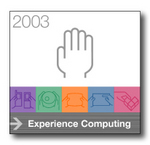All of a sudden, Aston Martin is the "It" brand of the automotive world. To be sure, the Aston Martin of the 70’s, 80’s and 90’s had a certain cachet, but it was a cigar-smoke-and-over-stuffed-leather-chairs-British-men’s-club kind of cachet. No more. Now Aston Martin is sexier than Ferrari, sportier than Porsche, manlier than Lamborghini. The new DB9 is the first modern GT car design of the 21st century.
This is a true brand renaissance, brought about not by the machinations of a branding firm or an advertising agency, but via a product development team that reached back to the golden days of Roy Salvadori and James Bond, distilled the essence of Aston Martin into something actionable, and then went to work.
Easy for me to say, but what does it mean, and how did they do it? They did it by taking something as familiar as the process of starting the motor and asking "What could be uniquely Aston Martin about this experience?" Here’s what Aston Martin designer Sarah Maynard says about the start button on the new DB9:
It
seemed wrong to us that most car starter buttons – the first point of
contact between driver and engine – is a plastic button. We wanted
something better so decided on crystal-like glass. The Aston Martin
logo is sand etched into it. It’s lit red when the ignition is on, and
afterwards changes to light blue. I think it’s a really cool piece of
design.
Glass. Etching. Not the usual way of doing business. More expensive than plastic. But special, and evocative of the way British cars used to be. And incredibly good for the Aston Martin brand, and perhaps even a good reason to spend so much on a car. This is great example of decisions made using not the data of a cost accountant, but with the judgment and deep experience of a trained designer who lives and feels and loves brand.

